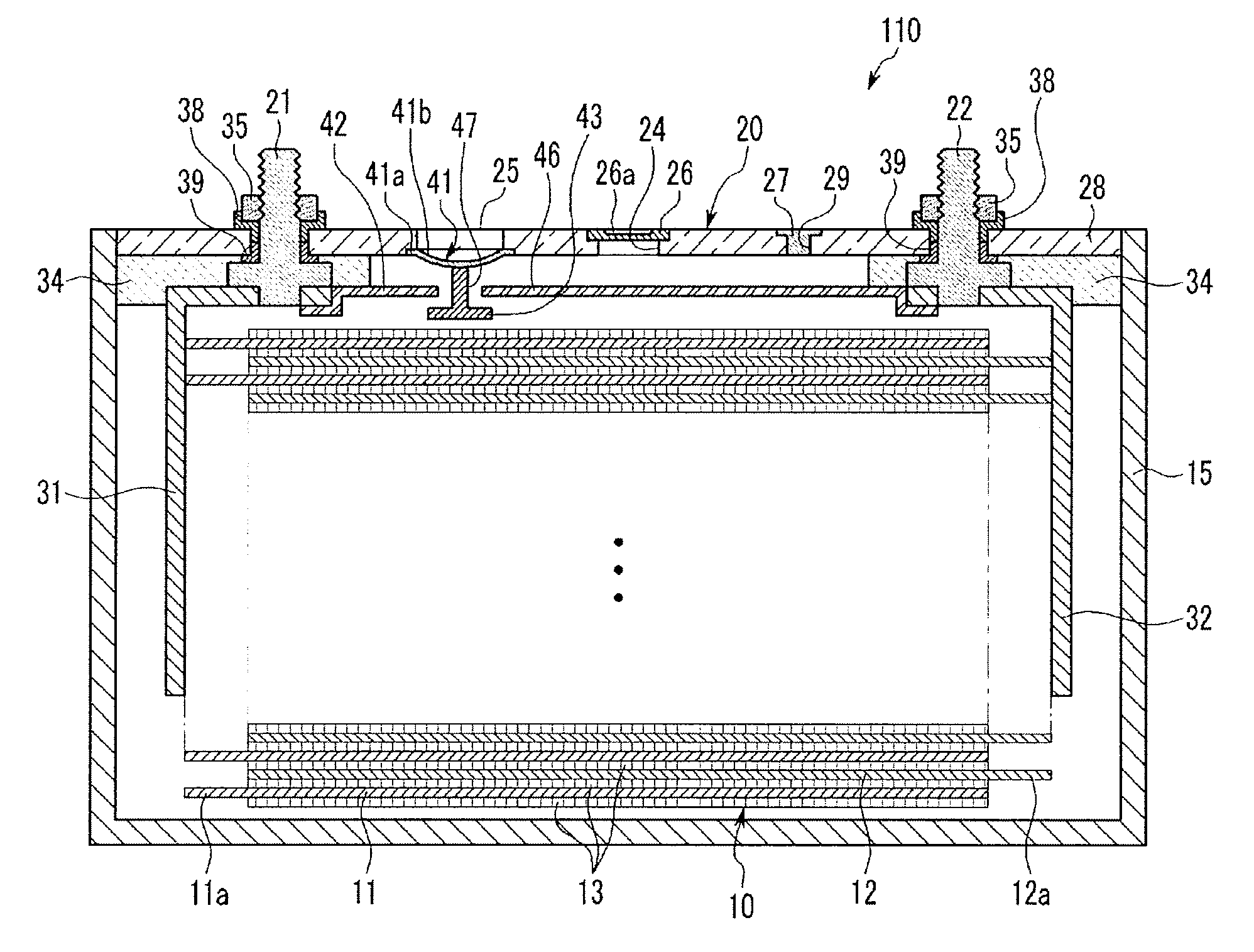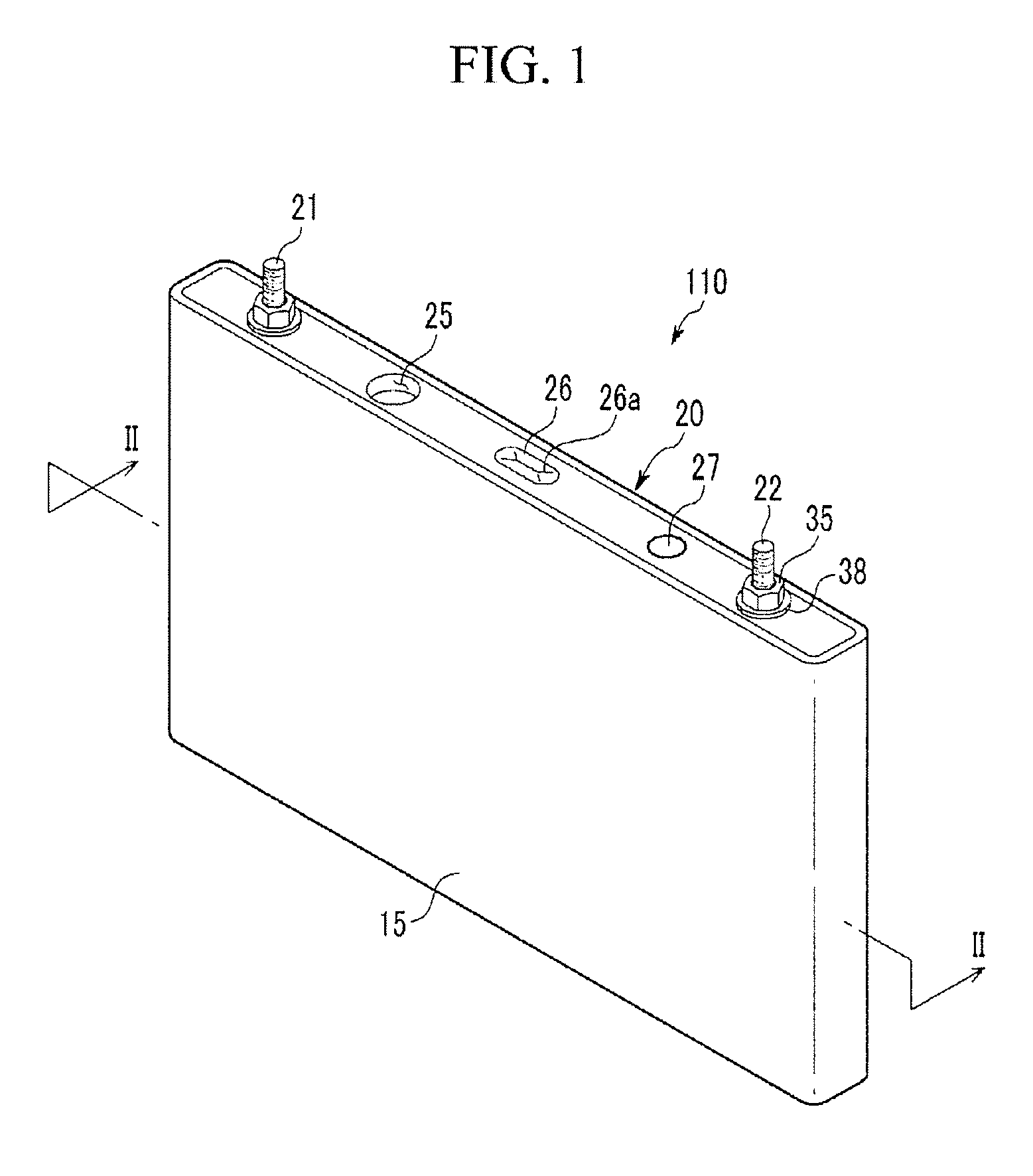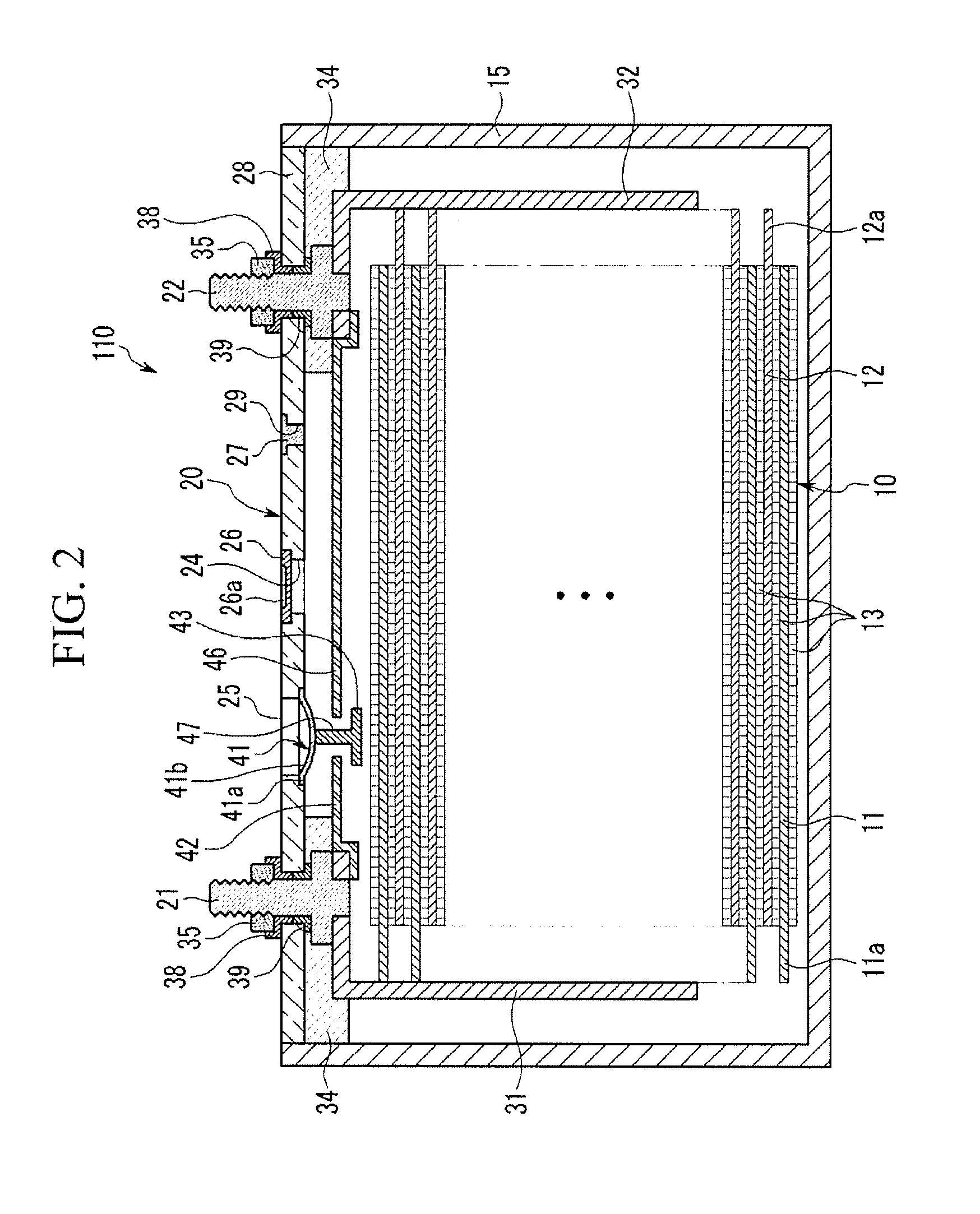Rechargeable battery
a rechargeable battery technology, applied in the field of rechargeable batteries, can solve the problems of increasing internal pressure, battery may explode or combust, and it is difficult to have a structure that cuts off or discharges current, and achieves the effect of improving safety
- Summary
- Abstract
- Description
- Claims
- Application Information
AI Technical Summary
Benefits of technology
Problems solved by technology
Method used
Image
Examples
first embodiment
[0029]The rechargeable battery 110 is a prismatic lithium ion rechargeable battery. However, the present invention is not limited thereto, and the present invention may be applied to various types of batteries such as a lithium polymer battery or a cylindrical lithium ion secondary battery.
[0030]The first electrode 11 and the second electrode 12 include coated regions, where active material is coated on a current collector formed of a thin plate of a metal foil, and uncoated regions 11a and 12a, where the active material is not coated. According to the present exemplary embodiment, the first electrode 11 is a positive electrode, and the second electrode 12 is a negative electrode. However, the present invention is not limited thereto. Therefore, the first electrode 11 may be a negative electrode, and the second electrode 12 may be a positive electrode.
[0031]The uncoated region 11a of first electrode is formed on one side end of the first electrode 11 along a length direction of the...
second embodiment
[0052]FIG. 3 is a cross-sectional view of a rechargeable battery according to the present invention.
[0053]Referring to FIG. 3, the rechargeable battery 120 according to another embodiment has generally the same structure as in the rechargeable battery cell according to the first embodiment, except for the structure of tabs and intermediate member, and therefore, structures that are similar may not be further described.
[0054]As shown in FIG. 3, the rechargeable battery cell 120 according to the present exemplary embodiment includes an electrode assembly 10, a case 15 containing the electrode assembly 10, and a cap assembly 50 sealing the case 15. The cap assembly 50 includes a cap plate 28 coupled to the opening of the case 15, a first terminal 21 electrically connected to the first electrode 11 and a second terminal 22 electrically connected to the second electrode 12.
[0055]The cap plate 28 is a thin plate and has a short-circuit hole 25.
[0056]A first tab 52 is electrically connecte...
third embodiment
[0064]FIG. 4 is a cross-sectional view of a rechargeable battery according to the present invention.
[0065]The rechargeable battery 130 according to the third exemplary embodiment includes an electrode assembly 10, a case containing the electrode assembly 10, and a cap assembly 60 sealing the case 15. The cap assembly 60 includes a cap plate 28 coupled to an opening of case 15, a first terminal 21 electrically connected to the first electrode 11, and a second terminal 22 electrically connected to the second electrode 12.
[0066]The cap plate 28 is a thin plate and has a short-circuit hole 25.
[0067]A first tab 67 located above the short-circuit hole 25 is electrically connected with the first terminal 21.
[0068]The first tab 67 has a plate shape and is located above the cap plate 28. The first terminal 21 is inserted in the hole of first tab 67 and fixed by a nut 35, thus joining the first tab 67 with the first terminal 21. Thereby, the first tab 67 is electrically connected to the first...
PUM
| Property | Measurement | Unit |
|---|---|---|
| thickness | aaaaa | aaaaa |
| thickness | aaaaa | aaaaa |
| pressure | aaaaa | aaaaa |
Abstract
Description
Claims
Application Information
 Login to View More
Login to View More - R&D
- Intellectual Property
- Life Sciences
- Materials
- Tech Scout
- Unparalleled Data Quality
- Higher Quality Content
- 60% Fewer Hallucinations
Browse by: Latest US Patents, China's latest patents, Technical Efficacy Thesaurus, Application Domain, Technology Topic, Popular Technical Reports.
© 2025 PatSnap. All rights reserved.Legal|Privacy policy|Modern Slavery Act Transparency Statement|Sitemap|About US| Contact US: help@patsnap.com



